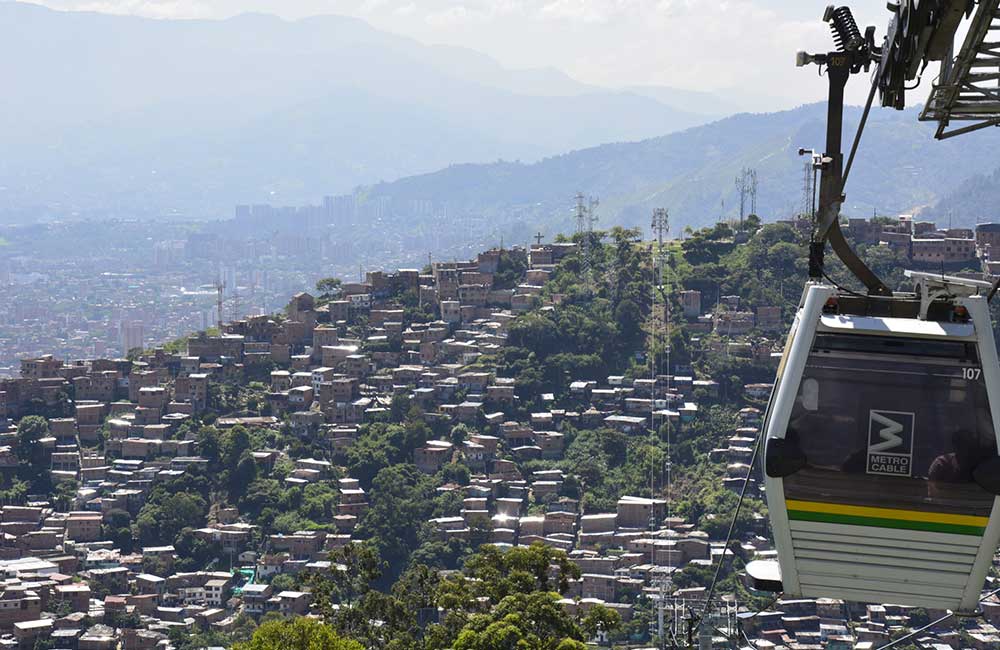Once dubbed the City of Eternal Violence due to Pablo Escobar’s drug cartels, this Colombian city today is an oasis of pubs, bars, art and architecture, and amazing coffee
Boarding the flight to Medellin, I was nervous; Reading about all the precautions and safety measures travellers to the country had to undertake made me anxious about my decision to visit the city.
But I was also restless and excited about seeing this place, which was once known for the cartels and crime, but today it’s known as one of the most innovative cities in the world. As the flight attendant announced our descent to Medellin, I curiously peeped out of the window. The city was lit up like a Christmas tree, spread across the mountains; Medellin’s topography was something I had never seen in my life.

“Do you see that?” asked my cab driver, pointing a finger towards a graffiti on the wall. “The local boys from my neighborhood made this.” He must have noticed my anxiety because he said, “You are going to stay in a new neighborhood. It’s safe!”
We came to an area with new buildings, contemporary architecture, lush green views, bars, and pubs. This was El Poblado, the trendiest neighbourhood in the city. My cab driver proudly declared, “Medellin is open to explorers who can choose to overlook their pre-conceptions and wander its streets”.
Who better than a local to narrate this story of transformation? So I booked a walking tour for the next day with Sebastian, an architecture student, and a part-time guide. Walking through modern-day Medellin, he pointed out the symbolic buildings, the famous Fernando Botero sculptures, parks and squares. He shared stories about the history and culture of the city while heading towards the most traditional place, Salon Malaga, home to the world-famous Colombian coffee.
Photo Credit: Akruti Patel

This 60-year-old café-bar is like a time travel capsule, with walls filled with photos from the early 50s, jazz playing in jukeboxes, and coffee served in vintage-style cups. Malaga is one of the few bars in town that is well-preserved, keeping the old Bohemian atmosphere intact. Almost every day, the same people come in to enjoy the single-styled, brewed Colombian coffee.
Sipping the finest coffee I have ever tasted, I listened as Sebastian talked about Medellin’s history, of Pablo Escobar’s drug empire in the 80s and 90s, and how he had held the entire city in his grip, suffocating it with poverty, corruption, and violence. Escobar’s death brought in freedom, but at the cost of many lives. Many innocent people died in the civil war between the authorities and guerrilla gangs, some were displaced from their homes, and many lost their loved ones.
Photo Credit: Akruti Patel

As Sebastian’s narration on the story of change continued, so did we. Changing our stop from the metro to cable cars uphill, he pointed out, “These cable cars have helped people come out of the past’s misery towards a promising future. Erected in 2008, they have connected the two different worlds.” The cable cars were moving swiftly and taking us across the highest neighborhood, to the most famous locality in the city, Communa 13.
Photo Credit: Akruti Patel

I couldn’t believe my eyes as I stepped down. I stood stunned, admiring the massive graffiti painted murals and art installations alongside electric escalators. This project is the first of its kind in the world where escalators and cable cars have been installed for a social purpose, once ridden with violence, now bursting with colours on every roof, house, door, and blank space in sight. The residents turned to art to express their agony and started painting throughout the neighborhood. Nowhere in the world has street art been so impactful, engaged so many people, and built such a narrative. Many public education programmes, libraries, playgrounds, activities for youth, and economic opportunities have been undertaken to uplift the quality of life here.
The air was filled with optimism; inhabitants were entertaining tourists with their rap songs and hip-hop dances, smiling and welcoming people for a chat, or a photo. Communa 13 is an urban living legend and a testimony to the change mirroring Medellin and Colombia today. I wonder… is the world willing to believe this non-fiction story?

